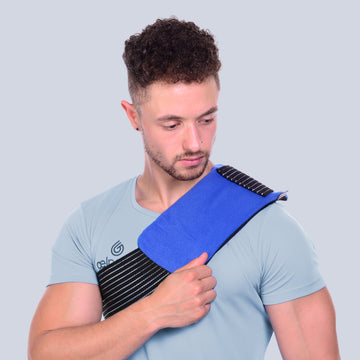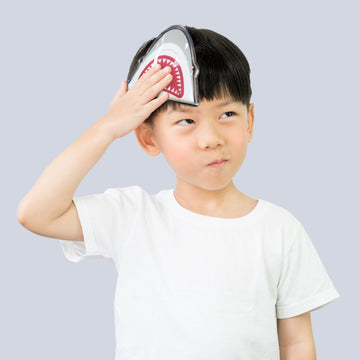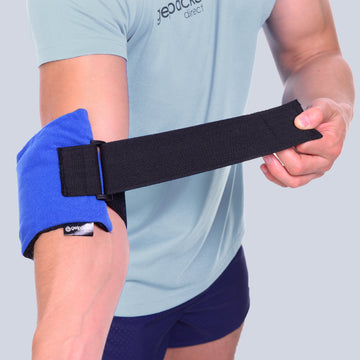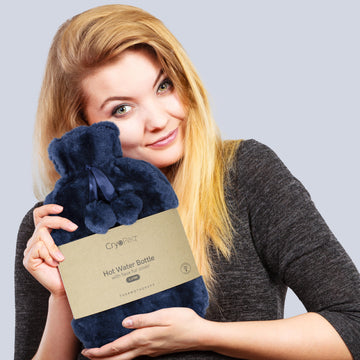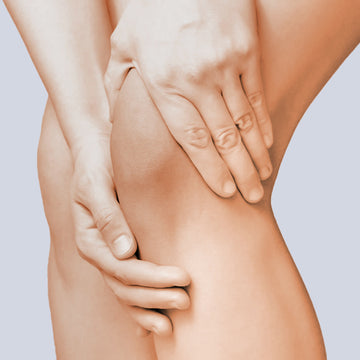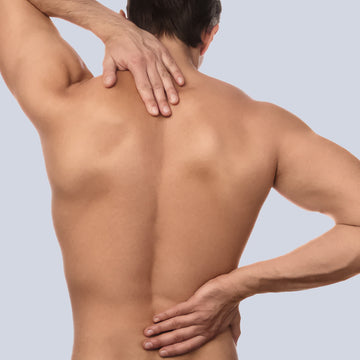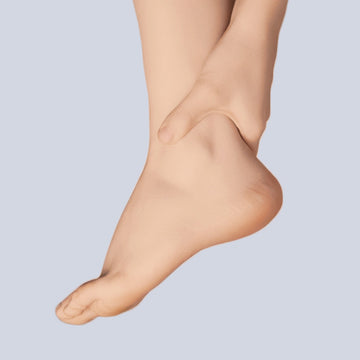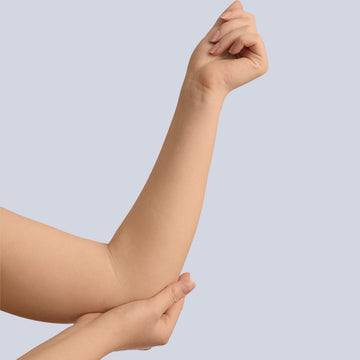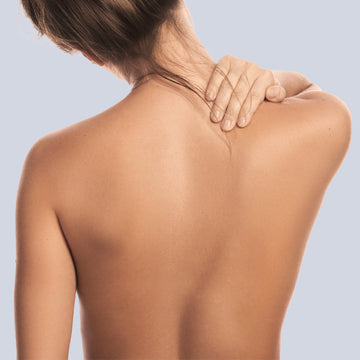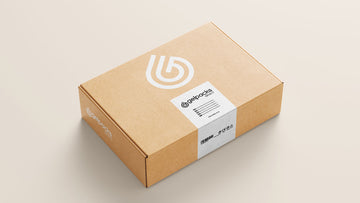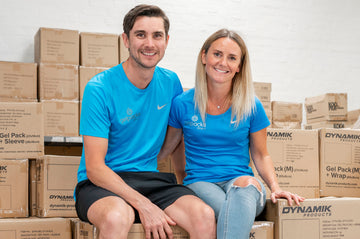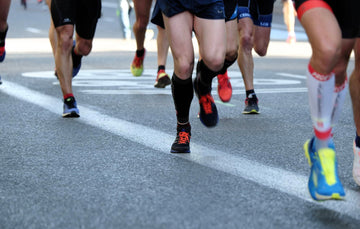Posted by Tia Patel | Jan-26-2021
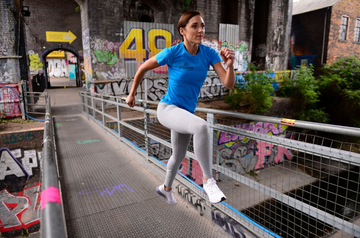
Treatment for running injures
We’ve all been all there, pushing through the pain, ignoring the signs our body is giving us, praying for a speedy recovery. 🙏🏻
Wearing the correct trainers can go a long way to helping with certain injuries, and there are also plenty of exercises and stretches we can all be doing to strengthen our bodies, however, we know as runners that ultimately, injury is part and parcel of what we do. Knowing how to prevent injury is key but having the knowledge to manage injury successfully is what will help to keep us on our feet!
Important information on running injuries
Millions of people pound the pavements every single day in the UK. Some enjoy running, while others feel like they need to do it. Regardless of the reasons behind getting out there, it is an alarming fact that roughly half of all ‘regular’ runners develop at least one injury over the course of a year.
While the majority of these running injuries are minor, some are very uncomfortable and without treatment can develop into something more serious. Therefore, it is imperative that if you are a runner (casual or serious) you have the best equipment available to help treat your potential injuries. Ice packs for injuries should be commonplace in your home if you go out running because everybody is only one missed step away from requiring ice packs!
The most common running injuries
With some expert advice from Rick Lovell at Achieve Physiotherapy , we’ve put pain to paper and investigated some of the most common running injuries which take us down a leg or two.
1. Patellofemoral pain syndrome (PFPS) A.K.A Runners Knee
What is runner's knee: Runner's knee is irritation of the strcd on the underside of the kneecap (patella). It’s characterized by a dull pain that is either “behind” or “around” the front and/or bottom of the kneecap.
Causes of runner's knee: Risk of suffering from runner's knee is increased for people with biomechanical factors including overpronation and having weak quads, hips, or glutes. Runners' knees typically flare up during or after long runs, whilst participating in movements such as squatting, after extended periods of sitting, or while descending hills and stairs.
Treatment for runner's knee: Strengthen weak hip and glute muscles with lateral side steps. Place a loop of resistance band just above your ankles or your knees. Separate your feet and bend your knees, lowering down into a slightly crouched position. While staying in this position, walk sideways 10 to 15 steps, keeping your feet straight and your upper body still. Then reverse directions. Keep your feet separated to maintain band tension. When this becomes easy, try doing this on your toes with your heels off the ground.
Post-run icing will provide pain relief in the early stages of runner's knee with heat working best once the injury is healing and no longer in an acute stage.
Watch the video below for expert advice from triathlete Fede Spinetta on using his gel pack to recover from injury
Prevention: To prevent runner's knee it's important to look at your running form. In particular your stride and knee tracking. By shortening your stride length and landing the knee slightly bent, you can take up to 30% load off the joint. To support your knee tracking, strengthen the quads and glutes with exercises like squats and lunges.
2. Achilles Tendonitis
What is achilles tendonitis: Achilles tendon is the thickest and strongest tendon in your body, connecting your calf muscles to the back of your heel. Under too much stress, the tendon tightens and becomes inflamed causing tendonitis.
Causes of achilles tendonitis: As you “toe off” the ground when you run, virtually all of the force used by your body comes from the Achilles. This force can be three times as much as your body weight and the faster you run, the more strain you put on the Achilles tendon. Runners who dramatically increase their training to include longer distances with more speedwork and have tight or weak calves are particularly vulnerable to achilles tendonitis.
How to treat achilles tendonitis: Alternate between hot and cold treatment. Ice for 10 - 15 minutes and then heat the affected area two hours later. Repeat the process as often as you like.
Strengthen the calves by performing heel drops. Stand with the balls of your feet on a step. Rise up on both feet. Once up, take your stronger foot off the step. Lower down on your injured foot, dropping your heel below the step. Rise back up, return your other foot to the step. Do 20 reps. Avoid running or cycling and instead use an elliptical machine or swim as a form of exercise to avoid putting excess strain on your Achilles.
Preventing achilles tendonitis: Strong calves protect your Achilles from flare-ups. By performing heel drops and weight bearing lower body exercises you can strengthen the calf muscles. However, it's important to avoid aggressive calf stretching and wearing flip-flops and high heels which can irritate the Achilles.
3. Plantar Fasciitis
What is plantar fasciitis: The plantar fascia is the flat length of connective tissue that runs from your heel bone (calcaneus) to the base of your toes. Its main roles are supporting the long arch in your foot and helping with the toe-off when you’re walking or running. Plantar fasciitis is pain caused by small tears or inflammation of the tendons and ligaments causing pain first thing in the morning which typically feels like a dull ache or bruise along your arch or on the bottom of your heel.
Causes of plantar fasciitis: Runners with very high or very low arches are vulnerable to suffering from plantar fasciitis where the plantar fascia is stretched away from the heel bone. Other causes are related to excessive inward (pronation) or excessive outward (supination) rolling of the foot, increasing distance of runs too quickly and back issues and core weakness which can lead to subtle change in your stride.
Treating plantar fasciitis: Roll your foot over massage or lacrosse ball for five minutes at a time up to five times a day to soothe the plantar muscle. Heat the area in sub-acute stages. To stretch your plantar fascia, sit with one leg crossed over the other so that your right ankle rests on your left knee. Grab the end of your right foot at the toes and gently pull back. Use your gel pack cold to soothe inflammation of the plantar area and relieve pain.
Preventing plantar fasciitis: The key to preventing plantar fasciitis is having shoes which fit your type. By having a gait analysis performed from a specialist sports shop, you can ensure that you are wearing shoes which support the biomechanics of your feet. For many people a neutral shoe and orthotic insoles may prove the best option.Stretch and massage the plantar fascia several times a day. In the morning, hang your feet over the edge of the bed and roll your ankles. Tight muscles may also be a contributing factor in causing plantar fasciitis. We recommend using a foam roller to loosen up the calf muscles.
4. Shin Splints
What is shin splints: Shin splints refers to medial tibial stress syndrome, an achy pain that results when small tears occur in the muscles around your shin bone (tibia).
Causes on shin splints: Shin splints occur when runners wear the wrong shoes for them which doesn’t have enough support for their foot type. Or shoes which have done too many miles and where the support has worn away.
How to treat shin splints: Rest and ice can ease the pain. Though conventional wisdom has preached calf stretching as a way to rehabilitate shin splints, there's little evidence that it helps. Instead we recommend gradually building your training to increase endurance, running on soft surfaces where possible to improve shock absorption and disperse forces more evenly. You may need a biomechanical assessment to find the best footwear. Incorporating specific strengthening exercises into your training program will also help to strengthen the supporting muscles whilst improving your running posture and form.
Preventing shin splints: The easiest and best way to avoid shin splints is to increase mileage gradually. It’s also important to make sure you are running in appropriate shoes and we would recommend seeking assistance from a specialist sports shop or even better, your physiotherapist.
Running injury prevention
Ultimately prevention is always better than cure, listen to your body, if you feel pain, STOP. However, we don’t live in a perfect world, which is why ice packs are a necessity! In any case, it is important that you take note of the 11 steps on the infographic below, and take the time to think about them before you go out. Pay particular attention to point 11 – learn from your mistakes. Every runner is different in both physiology and mindset, so the ‘rules’ change from person to person.
Last but not least, make sure you firmly imprint this acronym in your running memory bank! R.I.C.E for injury treatment – that’s Rest – Ice – Compress – Elevate.
Read further about the benefits of R.I.C.E. technique here
By being more aware of your own limitations, following the correct practices and having the correct tools for the job you can live a more pleasant, injury-free running life…
#TeamGPD
